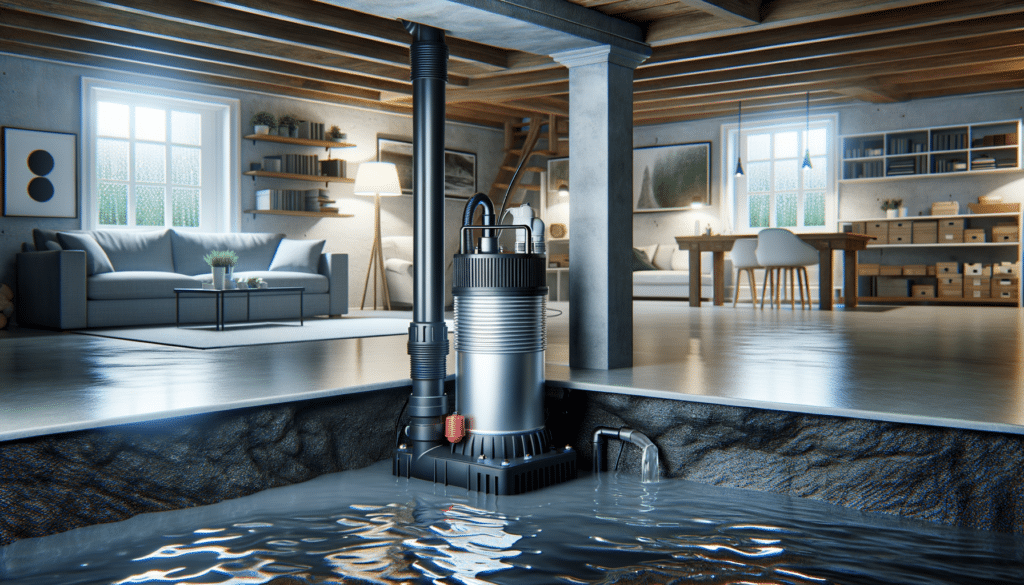Understanding the Basics of a Sump Pump
A sump pump is a device designed to remove accumulated water from a sump basin, commonly found in the basements of homes. Its primary function is to prevent flooding and manage groundwater that might seep into the basement. This is particularly crucial in areas with high water tables or those prone to heavy rainfall. By efficiently channeling water away from the foundation, a sump pump helps maintain the structural integrity of a building, ensuring that the basement remains dry and usable.
There are two main types of sump pumps: submersible and pedestal. Submersible pumps are installed inside the sump basin and are designed to operate underwater, offering a quieter operation. On the other hand, pedestal pumps have a motor mounted above the basin, making them easier to maintain but slightly noisier. Both types are effective, and the choice between them often depends on specific needs and preferences.
In addition to the different types, sump pumps vary in horsepower, which affects their capacity to move water. Homeowners should consider the size of their sump basin and the volume of water typically encountered to select an appropriate pump. Regular maintenance is also key to ensuring the longevity and reliability of the pump, including checking for clogs and ensuring the float switch is operational.
The Process of Sump Pump Installation
Installing a sump pump is a significant step in safeguarding a home against water damage. The process begins with selecting an appropriate location for the sump basin, typically the lowest point of the basement where water naturally accumulates. The basin is then installed by digging a hole that allows it to sit flush with the floor. Proper installation is critical, as an improperly placed or secured basin can lead to inefficiencies or even failure of the system.
Once the basin is in place, the sump pump itself is installed. This involves connecting the pump to a power source and ensuring it is correctly positioned within the basin. The discharge pipe is then fitted to direct water away from the home’s foundation, typically at least 10 feet from the building to prevent water from re-entering. A check valve is often installed in the discharge line to prevent water from flowing back into the basin.
Professional installation is recommended for homeowners unfamiliar with plumbing or electrical systems. This ensures that the sump pump is installed correctly and safely, reducing the risk of malfunction. Additionally, professionals can offer advice on the best type of pump for specific conditions and provide maintenance tips to keep the system running smoothly.
The Role of a Sump Pump in Basement Maintenance
Basements are particularly vulnerable to water damage, making the sump pump an essential component in maintaining a dry and healthy environment. By actively removing water that seeps into the basement, a sump pump protects against mold growth, structural damage, and the deterioration of stored items. This is especially important for finished basements, where water intrusion can lead to costly repairs and loss of valuable living space.
Regular inspection and maintenance of the sump pump system are crucial to its effectiveness. Homeowners should periodically check the pump for debris and ensure that the float switch is functioning correctly. Testing the pump by adding water to the basin can confirm that it activates and discharges water as expected. Additionally, backup systems, such as battery-powered pumps, can provide peace of mind in the event of a power outage.
Incorporating a sump pump into a comprehensive basement maintenance plan can significantly enhance the longevity and usability of this space. By preventing water damage, homeowners can avoid the health risks associated with mold and mildew, while also preserving the value and functionality of their home.
Choosing the Right Sump Pump for Your Needs
Selecting the right sump pump involves considering several factors, including the size of the sump basin, the volume of water to be managed, and the specific conditions of the home. Homeowners should assess whether a submersible or pedestal pump is more suitable, taking into account factors such as noise levels and maintenance requirements.
The horsepower of the pump is another critical consideration, as it determines the pump’s capacity to move water. A pump with too little power may struggle during heavy rainfall, while an overly powerful pump may be unnecessary and costly. Consulting with a professional can help determine the appropriate horsepower based on local weather conditions and the layout of the home.
Additional features, such as alarms and battery backups, can enhance the reliability of the sump pump system. Alarms alert homeowners to potential issues, such as rising water levels, while battery backups ensure the pump continues to operate during power outages. By carefully evaluating these factors, homeowners can choose a sump pump that effectively meets their needs and provides long-term protection against water damage.
Conclusion: Weighing the Benefits of a Sump Pump
A sump pump is a valuable addition to any home located in areas prone to flooding or high groundwater levels. By actively managing water intrusion, it helps protect the structural integrity of a home and maintains a healthy living environment. For homeowners considering a sump pump, understanding its function, installation, and maintenance is essential to making an informed decision.
Investing in a sump pump can offer peace of mind, knowing that the risk of water damage is significantly reduced. Whether installing a new system or upgrading an existing one, the benefits of a well-functioning sump pump are clear. By choosing the right pump and ensuring regular maintenance, homeowners can safeguard their property and enhance the longevity of their investment.


